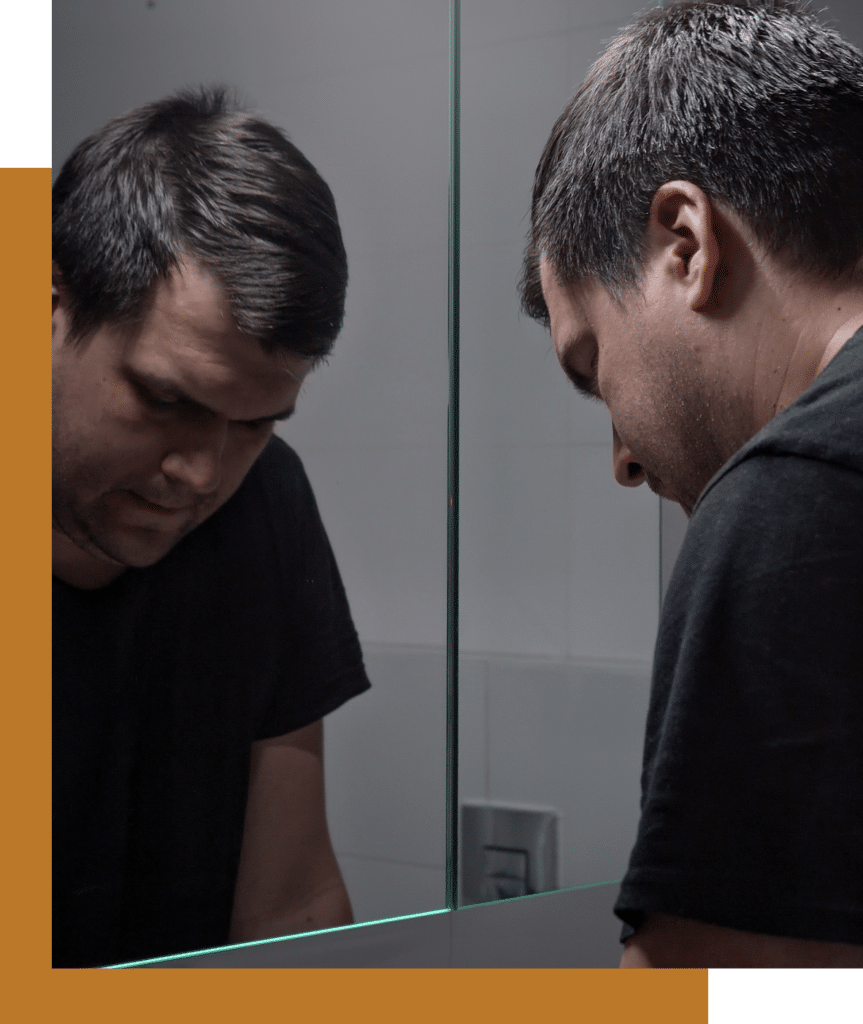Suicidal Thoughts: When To Seek Professional Help

It’s normal to think about death as part of the human experience. Yet, suicidal thoughts can be a sign you or someone you love is in need of professional help. In 2022, over 13 million people seriously contemplated suicide, highlighting the continued need for resources and support.
Suicidal thoughts are general thoughts about death that may come and go. When these thoughts escalate to suicidal ideation (SI), a person is thinking about harming themselves. This may lead to active planning, where they make a plan of how they will complete suicide.
If a person is experiencing suicidal ideation or is in the active planning stage, emergency help is necessary.
You don’t have to manage suicidal thoughts alone. Mission Connection Healthcare offers compassionate treatment options for reducing suicidal thoughts and managing one’s mental health. Contact us today at 866-753-5791 for support.

Signs and Symptoms of Suicidal Thoughts
If someone is experiencing thoughts of suicide, you may notice changes in their emotions or behavior. Some common signs of suicidal thoughts include:
- Saying they want to die
- Expressing feelings of guilt or shame
- Feeling like a burden
- Feelings of hopelessness or emptiness
- Severe agitation, sadness, rage, or anxiety
- Social isolation
- Extreme mood changes
Physical signs that someone may be contemplating suicide include:
- Changes in appetite
- Changes in sleep patterns
- Fatigue
- Increased risk-taking behavior or impulsiveness
- Increased substance use
- Self-harm behaviors like cutting, burning, or punching
The following are warning signs a person may be at high risk for attempting suicide:
- Researching suicide
- Purchasing a weapon
- Storing up medications
- Preparing a will
- Giving away personal items
- Saying goodbye to loved ones
What Causes Suicidal Thoughts?
The causes of suicidal thoughts can vary. There are many contributing factors that may lead someone to think about killing themselves, such as:
- Physical or Mental Health Conditions: People in chronic pain are at an increased risk of suicide. Being diagnosed with a mental health condition is also a risk factor, such as depression, bipolar disorder, schizophrenia, or a co-occurring substance use disorder.
- Trauma: Witnessing or experiencing physical violence, sexual abuse, war, or other traumatic events can cause thoughts of suicide. Research shows that healthcare workers and emergency responders are at an increased risk of suicide.
- Stress: Divorce, debt, job loss, or the death of a friend or family member are all sources of stress that can contribute to suicidal thoughts.
- Biological Factors: Chemical brain imbalances, neuroinflammation, and changes in immune system functioning are thought to play a role in suicidal ideation.
- Genetics: Research suggests that suicidal ideation and suicidal behavior are characteristics that can be passed from parents to children.
- Societal Factors: Existing stigma surrounding mental health may exacerbate suicidal thoughts.

Suicidal Thoughts vs. Suicidal Ideation
For some people, suicidal thoughts are sporadic and fleeting. The person may think about death, but it’s a passing thought. For others, suicidal thoughts are more severe and may build to suicidal ideation or active planning.
There are two categories of suicidal ideation: passive suicidal ideation and active suicidal ideation.
People experiencing passive suicidal ideation may express a desire to die but do not have a plan in place or intent to act on these thoughts. Active suicidal ideation involves thoughts of wanting to die and the intention of acting on suicidal thoughts. The person may also have begun active planning.
If you or someone you know is experiencing suicidal ideation, it’s important to seek help immediately. You can do so by calling 911 or an emergency crisis hotline (more on this later).
How Suicidal Thoughts Are Diagnosed
Suicidal thoughts aren’t classified as a mental health disorder, so these don’t receive a diagnosis per se. However, if you’re struggling with suicidal thoughts, it’s important to reach out to a medical or mental health professional. They can assess your mental health and guide you toward the right support for you.
Professional evaluation by a mental health expert is essential if you, or someone you love, are struggling with suicidal thoughts. Experts use psychological risk assessments and structured interviews to assess the risk of suicide, as well as identify underlying mental health conditions.
If you’re struggling with severe suicidal thoughts, a medical professional or mental health expert will create a tailored treatment plan for you to meet your unique needs.
Here are the steps involved in “diagnosing” suicidal ideation:
1. Screen for Suicidal Thoughts
This involves directly asking the person if they are thinking about suicide. For example, “Are you thinking about killing yourself?” Many people fear that asking a person about suicide will put the idea in their head. However, research shows that discussing suicide actually lowers the risk.
2. Identify Risk Factors
Research shows older adults, males, and members of the LGBTQ+ community are at an increased risk of suicide. In addition to assessing demographic risk factors, a doctor will also factor in past trauma, stressful life events, and other influential factors.
3. Conduct a Patient History & Current Psychiatric Evaluation
Has this person attempted suicide before? Do they have a family history of mental illness? These questions give healthcare providers a more well-rounded picture of a person’s psychological health. They will also evaluate any comorbid disorders, current treatments, and coping skills.
4. Assess Suicidal Ideation and Intent
A doctor will ask detailed questions about suicidal thoughts. For example, “How frequent are they?” and “How long do they last for?” They will also ask about a suicide plan, access to resources to aid them in their attempts at suicide, and their intent to die. Some questions can also help patients explore reasons to live. For example, “What has stopped you from acting on these thoughts?”
Treatment Options for Suicidal Thoughts
Different treatment options can help people manage suicidal thoughts and remain safe. Multiple treatment methods may be recommended depending on the severity of suicidal thoughts and suicide risk.
- Medication: People who have a mental health disorder or substance use disorder may be prescribed antidepressants or other mood disorder treatment drugs.
- Telehealth Services: Providing increased accessibility, patients can speak with a behavioral health expert using telecommunication services. Crisis intervention hotlines are also available 24/7.
- Outpatient Therapy for Suicidal Thoughts: Mental health experts use different treatment modalities to support patients with suicidal thoughts. A therapist can help you identify thinking patterns, build mindfulness skills, process trauma, and manage stress.
- Psychiatric Hospitalization: While psychiatric hospitalization may be recommended in some cases, this treatment is primarily for people at imminent risk of suicide.
Finding the treatment method that best suits you or your loved one’s needs can help you regain a sense of hope and stability. You deserve support that suits you.
Outpatient Therapy Options
Outpatient therapy allows you to work directly with a mental health professional to manage and reduce your suicidal thoughts. The following outpatient treatments can help you address different areas of your mental health:
- Cognitive Behavioral Therapy (CBT): Focuses on reframing negative thoughts and implementing new behavioral responses.
- Dialectical Behavioral Therapy (DBT): Will help you identify your triggers, develop coping mechanisms, and strengthen your emotion regulation skills.
- Intensive Outpatient Programs (IOPs): IOPs provide a structured environment combining therapy and skill-building. This serves as an alternative to inpatient treatment.
- Problem-Solving Therapy (PST): Builds problem-solving abilities and decision-making skills.

Telehealth and Virtual Therapy
In telehealth communication, you meet virtually one-on-one with a licensed mental health professional. Telehealth or virtual therapy can be a great option for you if you don’t feel comfortable seeing a therapist in person. Telecommunication services also make mental health care more convenient and accessible.
Alternatively, virtual support groups allow you to connect with others who are going through similar experiences.
Coping Strategies and Support for Suicidal Thoughts
Suicidal thoughts can lead to feelings of isolation and hopelessness. But a combination of social support and coping strategies can help you manage your suicidal thoughts, one day at a time.
- Lean on Your Support Network: Confiding in a trusted friend, family member, or peer can help you feel heard, validated, and less alone.
- Practice Mindfulness: Meditation, journaling, and breathing techniques can ground the body and calm the mind. Creative activities like playing a musical instrument, painting, or knitting can also help. Allowing yourself to fully feel your emotions until they pass can also be an effective coping strategy.
- Spiritual Practices: For people who are spiritual or religious, relying on one’s faith may offer hope.
- Distractions: Research shows that socializing with friends, researching a topic you’re interested in online, or keeping busy with tasks like cleaning or organizing are short-term coping strategies that can reduce suicidal ideation.
- Physical Activities: Getting outside in nature or exercising regularly can reduce the risk of suicidal ideation.
While these strategies can help manage suicidal thoughts, they aren’t a replacement for therapeutic support. Always reach out to a mental health professional if you’re struggling with thoughts of suicide. They can support and guide you.
When to Seek Help for Suicidal Thoughts
If you or someone you love is talking about wanting to die, having thoughts of harming themselves, or has begun making a suicide plan, seek immediate professional help. Call 911 or reach out to a mental health crisis hotline like the 988 Suicide & Crisis Lifeline or the SAMHSA hotline at 1-800-662-HELP (4357).
Living with suicidal thoughts can be emotionally and physically draining, but you don’t have to live with these feelings forever, and you don’t have to face them alone.
Mission Connection Healthcare provides a variety of in-person and telehealth mental health services. Reach out to our hotline for non-emergency outpatient care at 866-619-7530 to get started on your personalized therapy plan today.
References
Alexander, M. J., Haugland, G., Ashenden, P., Knight, E., & Brown, I. (2009). Coping with thoughts of suicide: techniques used by consumers of mental health services. Psychiatric services (Washington, D.C.), 60(9), 1214–1221. https://doi.org/10.1176/ps.2009.60.9.1214
CDC (2024). Suicide Data and Statistics. U.S. Centers for Disease Control and Prevention.
https://www.cdc.gov/suicide/facts/data.html
Dazzi, T., Gribble, R., Wessely, S., & Fear, N. T. (2014). Does asking about suicide and related behaviours induce suicidal ideation? What is the evidence?. Psychological medicine, 44(16), 3361–3363. https://doi.org/10.1017/S0033291714001299
Harmer B, Lee S, Rizvi A, et al. Suicidal Ideation. [Updated 2024 Apr 20]. In: StatPearls [Internet]. Treasure Island (FL): StatPearls Publishing; 2024 Jan-. Available from: https://www.ncbi.nlm.nih.gov/books/NBK565877/NIH (2022). Warning Signs of Suicide. National Institute of Mental Health. https://www.nimh.nih.gov/health/publications/warning-signs-of-suicide
NIH (2024). Suicide Prevention. National Institute of Mental Health. https://www.nimh.nih.gov/health/topics/suicide-prevention
Norris, D. R., & Clark, M. S. (2021). The Suicidal Patient: Evaluation and Management. American family physician, 103(7), 417–421. https://www.aafp.org/pubs/afp/issues/2021/0401/p417.html
Olfson, M., Cosgrove, C. M., Wall, M. M., & Blanco, C. (2023). Suicide Risks of Health Care Workers in the US. JAMA, 330(12), 1161–1166. https://doi.org/10.1001/jama.2023.15787
Ross EL, Bossarte RM, Dobscha SK, et al. Estimated Average Treatment Effect of Psychiatric Hospitalization in Patients With Suicidal Behaviors: A Precision Treatment Analysis. JAMA Psychiatry. 2024;81(2):135–143. doi:10.1001/jamapsychiatry.2023.3994
https://jamanetwork.com/journals/jamapsychiatry/fullarticle/2810865
SAMHSA (2023) Self-Harm. U.S. Department of Health & Human Services. https://www.samhsa.gov/mental-health/self-harm
Stanley, B., Martínez-Alés, G., Gratch, I., Rizk, M., Galfalvy, H., Choo, T. H., & Mann, J. J. (2021). Coping strategies that reduce suicidal ideation: An ecological momentary assessment study. Journal of psychiatric research, 133, 32–37. https://doi.org/10.1016/j.jpsychires.2020.12.012
Sun, S., Liu, Q., Wang, Z. et al. Brain and blood transcriptome profiles delineate common genetic pathways across suicidal ideation and suicide. Mol Psychiatry 29, 1417–1426 (2024). https://doi.org/10.1038/s41380-024-02420-z
Vancampfort, D., Hallgren, M., Firth, J., Rosenbaum, S., Schuch, F. B., Mugisha, J., Probst, M., Van Damme, T., Carvalho, A. F., & Stubbs, B. (2018). Physical activity and suicidal ideation: A systematic review and meta-analysis. Journal of affective disorders, 225, 438–448. https://doi.org/10.1016/j.jad.2017.08.070
Vigil, N. H., Beger, S., Gochenour, K. S., Frazier, W. H., Vadeboncoeur, T. F., & Bobrow, B. J. (2021). Suicide Among the Emergency Medical Systems Occupation in the United States. The western journal of emergency medicine, 22(2), 326–332. https://doi.org/10.5811/westjem.2020.10.48742


